Real-Time Deployment of Mesh Networks
REAL-TIME DEPLOYMENT OF MESH NETWORKS
Overview
The goal of real-time deployment is the rapid establishment of a wireless mesh network to support communications in hard-to-reach areas. Intended applications are primarily emergency response communications in areas where traditional wireless solutions are problematic: inside large buildings, underground tunnels and mines, and urban canyons. Beyond two-way communications, ancillary services may include location tracking of emergency responders, environmental sensing, and physiological sensing of responders.
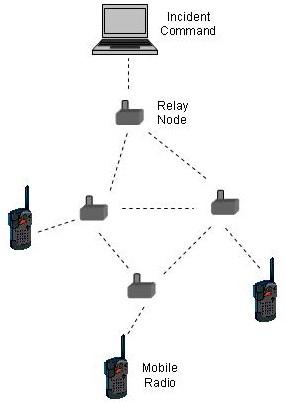
In a typical scenario, a first responder (FR) equipped with a two-way radio and several small relay nodes enters a building. As the FR goes further into the building, the radio signal from incident command (IC) weakens. Before losing radio connectivity with IC, a relay node is deployed, providing two-hop connectivity between the FR and IC. This process repeats whenever any FR is about to lose radio signal, creating a multi-hop mesh network in real time to maintain connectivity with IC.
NIST work on real-time deployment of mesh networks is focused in three areas:
- Link Quality Measurement to support rapid assessment of wireless mesh links
- Modeling and Simulation of mesh networks and real-time deployment protocols
- Prototyping, Testing and Evaluating implementations of rapidly-deployable mesh networks
Link Quality Measurement
Link quality measurement is needed by the deployment protocol to determine when a new node needs to be added to the network to maintain connectivity as it expands. Of utmost importance to efficient deployment of mesh network resources is detecting the onset of a marginal link before it occurs. NIST is studying various approaches to rapid and efficient measurement of the reliability of time-varying links in packet-switched wireless networks.
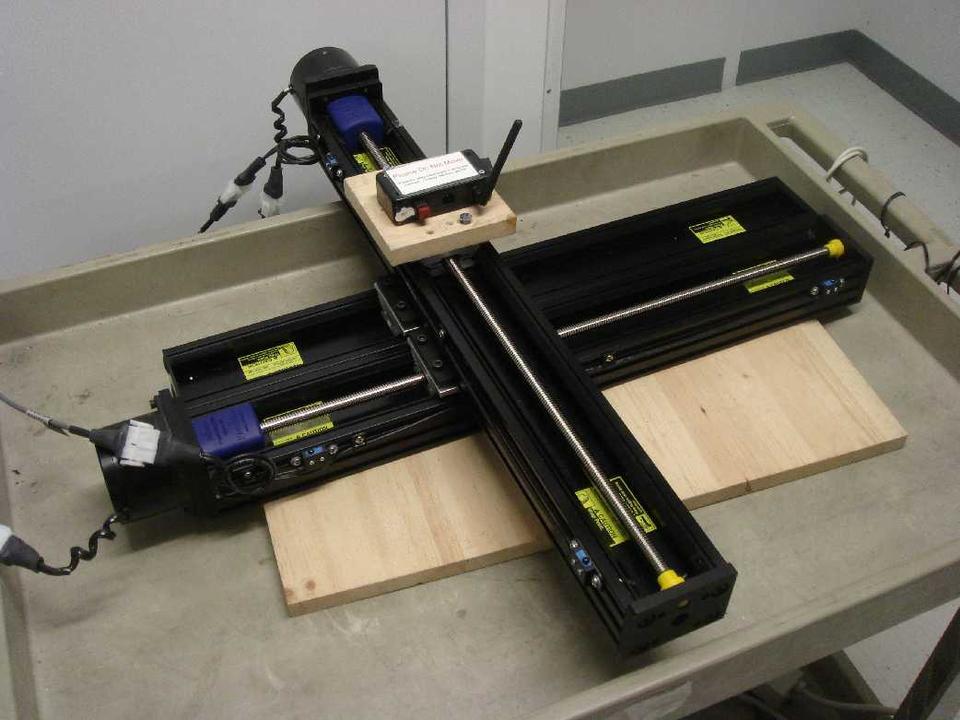
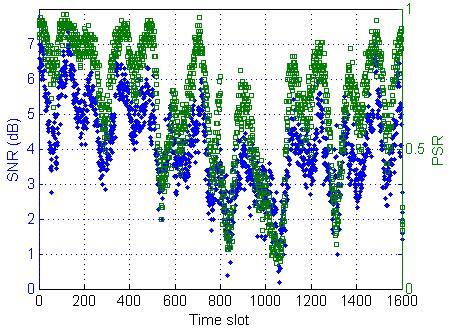
Modeling and Simulation
NIST is developing models and simulation tools to evaluate the performance of mesh networks and deployment protocols in RF-challenging environments. Specific efforts include:
- Modeling real-time deployment of indoor mesh network nodes
- Modeling wireless mesh network performance in underground mines
- Modeling TCP performance in mesh networks with cognitive radios
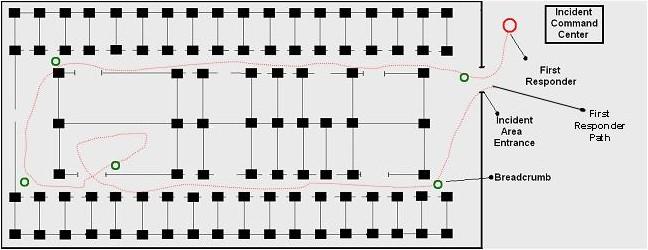
Prototyping, Testing, and Evaluation
NIST has developed two prototypes demonstrating real-time deployment of a multihop wireless network between a fixed incident command station and a mobile user:
- 900 MHz system based on TinyOS motes
- 2.4 GHz system based on IEEE 802.11
These systems have been used for testing, evaluation and feasibility analysis.
| Features of Real-Time Deployment Prototypes | 900 MHz System | 2.4 GHz System |
| Rapid link quality measurement | X | X |
| Automated deployment indication | X | X |
| Local placement assistance | X | X |
| Full-duplex voice | X | |
| Two-way text messaging | X | X |
| Centralized monitoring of sensor data | X | X |
| Location tracking using RFID-Assisted Localization | X | X |
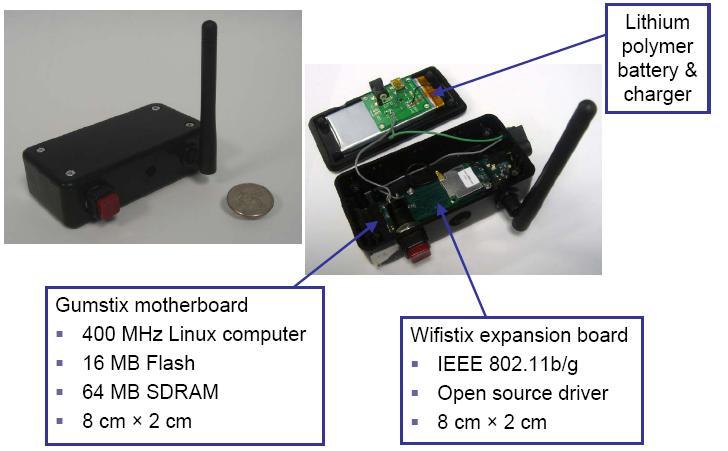
Certain commercial equipment, instruments, or materials are identified in order to specify the experimental procedure adequately. Such identification is not intended to imply recommendation or endorsement by the National Institute of Standards and Technology, nor is it intended to imply that the materials or equipment identified are necessarily the best available for the purpose.
Related Work
Real-time Deployment
- J. Q. Bao and W. C. Lee, "Rapid deployment of wireless ad hoc backbone networks for public safety incident management," in Proc. IEEE Globecom, November 2007.
- D. Naudts, S. Bouckaert, J. Bergs, A. Schoutteet, C. Blondia, I. Moerman, P. Demeester, "A wireless mesh monitoring and planning tool for emergency services," in Proc. Workshop on End-to-End Monitoring Techniques and Services (E2EMON '07), May 2007.
- S. F. Midkiff and C. W. Bostian, "Rapidly-deployable broadband wireless networks for disaster and emergency response," presented at First IEEE Workshop on Disaster Recovery Networks (DIREN '02), June 24, 2002, New York City, NY.
Link Quality Measurement
- A. Wapf and M. R. Souryal, "Measuring indoor mobile wireless link quality," in Proc. IEEE International Conference on Communications (ICC), June 2009.
- M. R. Souryal, L. Klein-Berndt, L. E. Miller, and N. Moayeri, "Link assessment in an indoor 802.11 network," in Proc. IEEE Wireless Communications Networking Conference (WCNC), April 2006.
Prototyping, Testing, and Evaluation
- A. Wapf, "Platform migration and performance enhancements of the lifeline prototype," Semester Thesis, ETH Zurich, September 2007.
- J. Geissbuehler, "Wireless multihop communications for first responder connectivity," Master Thesis, ETH Zurich, Summer 2006.
Related Efforts
- DARPA LANdroids program
Publications
- M. R. Souryal, A. Wapf, N. Moayeri, Rapidly-Deployable Mesh Network Testbed
- M. R. Souryal, J. Geissbuehler, L. E. Miller, and N. Moayeri, Real-Time Deployment of Multihop Relays for Range Extension
- M. T. Refaei, M. Souryal, and N. Moayeri, Interference Avoidance in Rapidly Deployed Wireless Ad Hoc Incident Area Networks
Contact
Nader Moayeri
Advanced Network Technologies Division
(301) 975-3767
nader.moayeri [at] nist.gov (moayeri[at]nist[dot]gov)

